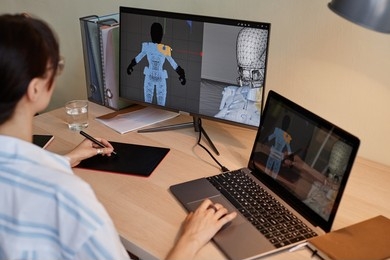Introduction:
Animation, a captivating blend of art and technology, has been a cornerstone of entertainment for generations. It’s a medium that has the unique ability to transcend language barriers, age differences, and cultural divides. Over the years, animation has evolved from simple sketches to intricate digital masterpieces, reflecting the technological advancements and creative innovations of the times.
The Beginnings of Animation:
Before the widespread use of digital technology and the rise of visual design services, the world was captivated by animation through basic forms like shadow puppetry and magic lantern shows. These age-old techniques established the foundation for an industry that would soon flourish. The dawn of the 20th century heralded a transformative phase with the advent of hand-drawn animations. Icons like Mickey Mouse, brought to life by Walt Disney in 1928, were more than just sources of entertainment; they evolved into cultural landmarks, paving the way for a revolutionary chapter in visual storytelling.
Golden Age of Animation:
Spanning from the 1930s to the 1960s, the Golden Age of Animation was a period of unprecedented creativity and growth. Major studios like Disney, Warner Bros., and MGM dominated the scene, churning out timeless classics that are still cherished today. This era was characterized by the introduction of color and synchronized sound, which added depth and dimension to animated films. Characters became more vibrant, stories more compelling, and the world of animation expanded beyond anyone’s wildest dreams.
Technological Advancements:
As the decades rolled on, technology began to play an increasingly pivotal role in the world of animation. The painstaking process of hand-drawing each frame gave way to the wonders of computer-generated imagery (CGI). Software platforms like Adobe Flash and Maya became indispensable tools for animators, enabling them to craft more detailed, fluid, and realistic animations. The release of “Toy Story” in 1995, the first full-length CGI animated film, marked a watershed moment, showcasing the limitless possibilities of digital animation.
Modern Animation:
The animation industry today is a testament to the perfect marriage of art and technology. With advancements in 3D animation and motion capture, animators can now create characters and worlds that are indistinguishable from reality. Films like “Frozen” and “Zootopia” have not only achieved monumental commercial success but have also left an indelible mark on popular culture. These modern masterpieces are a reflection of the times, addressing contemporary issues and resonating with audiences worldwide.
The Future of Animation:
As we gaze into the horizon, the future of animation, especially in the realm of video animation services, appears boundless. Augmented reality (AR) and virtual reality (VR) are poised to redefine the animation landscape, offering immersive experiences that were once the stuff of science fiction. With the rising demand for video animation services, the integration of artificial intelligence promises not only to meet this demand but also to revolutionize the animation process. This could lead to the automation of certain tasks and open up new avenues for creativity, ensuring that video animation services continue to evolve and captivate audiences worldwide.
Conclusion:
From its humble beginnings as hand-drawn sketches to the digital marvels of today, animation has journeyed through time, capturing the imagination of generations. It’s a journey of technological marvels, artistic genius, and endless innovation. As we stand on the cusp of a new era, one thing is certain: the world of animation will continue to enchant, inspire, and evolve.





